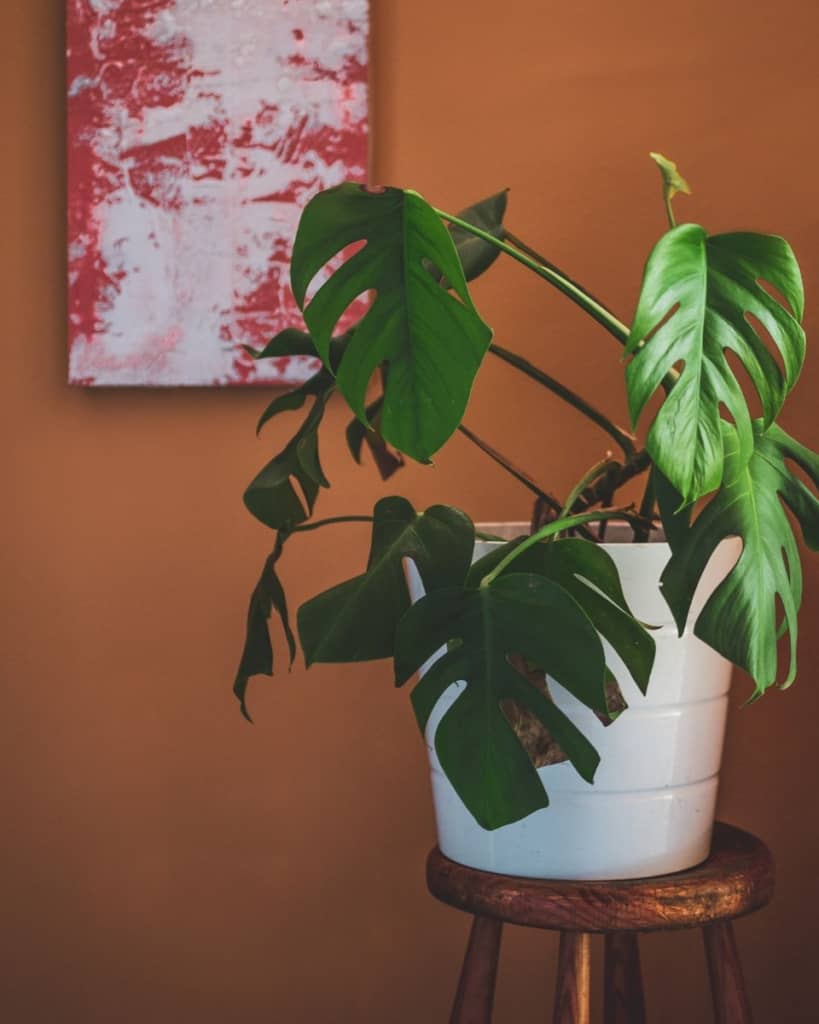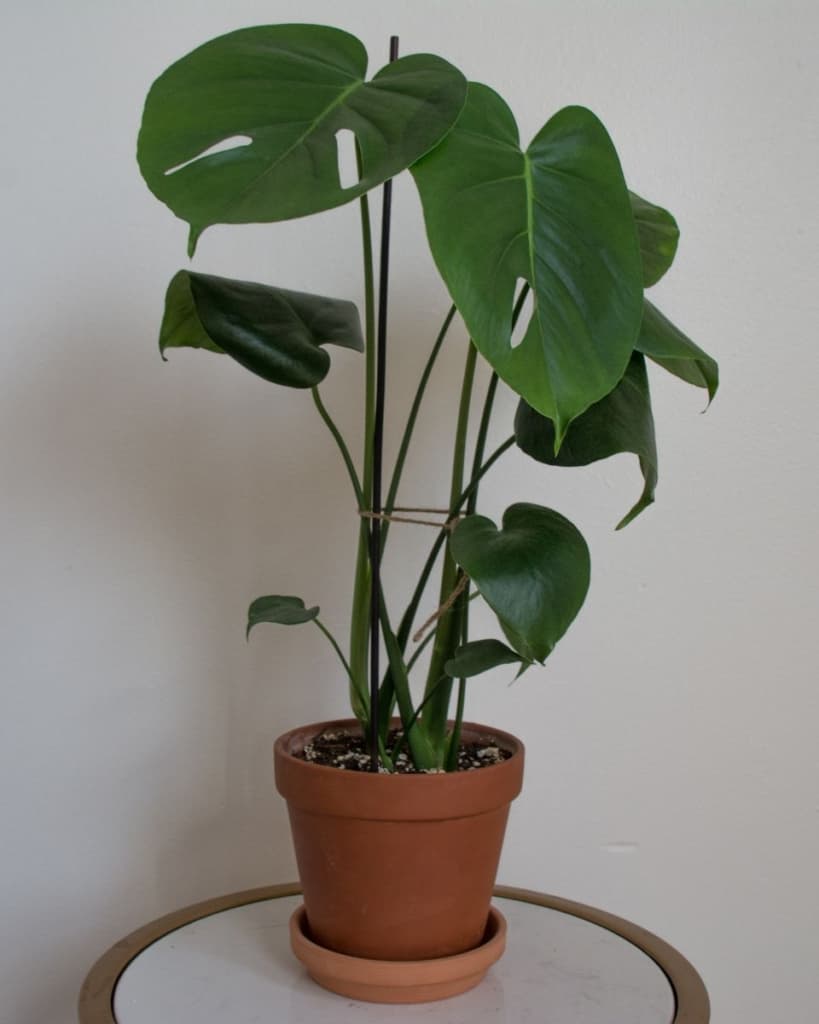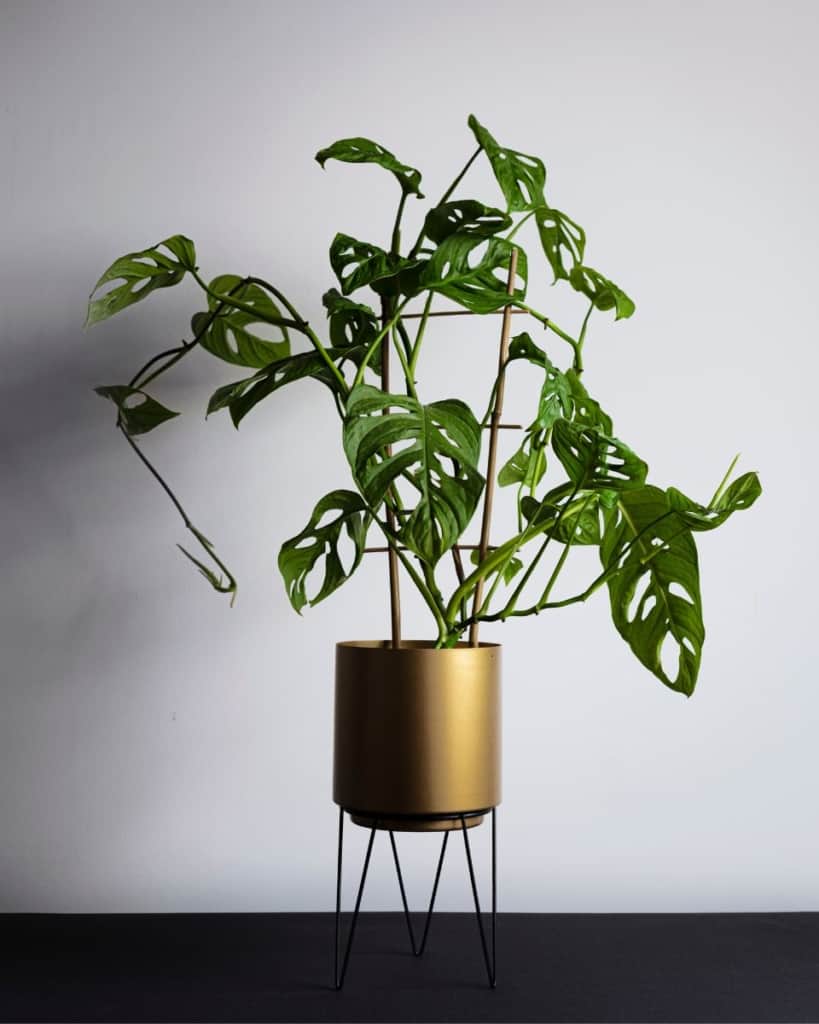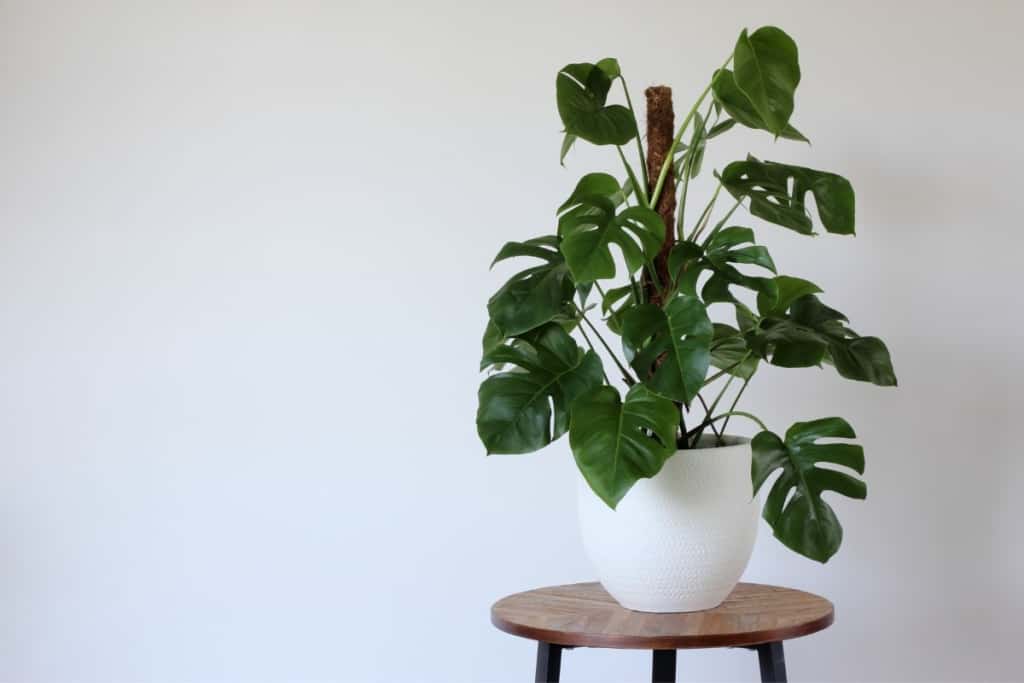Monstera, also known as the Swiss cheese plant, is a popular houseplant that is loved for its strikingly large and uniquely shaped leaves. One of the key factors that make the Monstera so attractive is its ability to grow upwards, creating a stunning display of greenery in any room. In this post, we will explore how to grow Monstera upwards and share some tips to help your plant thrive.

If you’re new to gardening or simply looking to expand your knowledge, you may be wondering how to grow Monstera upwards. Growing Monstera upwards is a process that requires patience, care, and attention to detail. Whether you’re starting with a young plant or looking to revive an older one, there are a few key things you need to know in order to achieve success. By following the tips and tricks in this post, you’ll be well on your way to growing a healthy and vibrant Monstera that stands tall and proud in your home.
Contents
Why Your Monstera Is Falling Over
While growing a Monstera upwards can be a rewarding experience, it’s not uncommon for these plants to experience issues that cause them to fall over. If you’ve noticed your Monstera beginning to lean or topple, don’t worry—there are a number of factors that can contribute to this issue, and many can be easily resolved.

One common reason for a falling Monstera is a lack of support. As the plant grows taller, it may struggle to support its own weight without additional help. To address this issue, consider staking your Monstera to provide it with the necessary support it needs.
Another possible culprit is overwatering, which can cause the plant’s root system to become weak and compromised. Make sure you’re providing your Monstera with adequate drainage and avoiding overwatering to keep the roots healthy and strong.
Finally, light and humidity are important factors that can affect your Monstera’s growth and stability. Ensure that your plant is receiving enough light and is in a location with adequate humidity to promote healthy growth and prevent it from toppling over.
By understanding the common reasons why Monstera plants fall over and taking steps to address these issues, you can help your plant thrive and achieve its full potential. With a little bit of care and attention, your Monstera can continue to grow upwards and provide you with years of beauty and enjoyment.
How To Grow Monstera Upwards
Using a Stake

One effective method for growing your Monstera upwards is to use a stake. Here’s how to do it:
- Obtain a sturdy stake: Choose a strong, sturdy stake that is at least as tall as your Monstera or slightly taller.
- Insert the stake: Carefully insert the stake into the soil next to your Monstera, making sure to avoid damaging the roots.
- Tie the plant to the stake: Use soft plant ties or strips of fabric to gently tie the Monstera to the stake at several points along its stem. Be sure not to tie the plant too tightly, as this can cause damage.
- Monitor the plant: Check the plant regularly to make sure it is growing straight and tall. Adjust the ties as needed to keep the Monstera securely attached to the stake.
If you have decided to stake your Monstera plant, it’s important to choose the right type of stake to ensure the best support. Here are some common types of stakes that are used for Monstera support:
- Wooden stakes: Wooden stakes are a popular choice for Monstera support because they are strong, sturdy, and natural-looking. They can also be easily customized to fit your plant’s needs by cutting them to the desired length.
- Bamboo stakes: Bamboo stakes are similar to wooden stakes but are more lightweight and flexible, making them a good choice for smaller Monstera plants or for those that need a little extra support.
Using a Trellis

Another option for growing your Monstera upwards is to use a trellis. Follow these steps to get started:
- Choose a trellis: Select a trellis that is sturdy and tall enough to support your Monstera as it grows.
- Position the trellis: Place the trellis behind the Monstera, making sure it is secure and will not tip over.
- Train the plant: Gently guide the Monstera’s stems and leaves onto the trellis, being careful not to damage the plant.
- Monitor the plant: Check the plant regularly to make sure it is growing upward along the trellis. Adjust the plant as needed to keep it properly supported.
Using a Moss Pole

A moss pole is another great option for helping your Monstera grow upwards. Here’s how to do it:
- Obtain a moss or coco coir pole: Purchase a pole made of either sphagnum moss or coco coir. These materials will provide a supportive surface for your Monstera to cling to.
- Insert the pole: Carefully insert the pole into the soil next to the Monstera, making sure to avoid damaging the roots.
- Secure the pole: Use garden twine or plant ties to securely attach the Monstera to the pole. Be sure to tie the plant loosely enough to avoid damaging the stem.
- Monitor the plant: Keep an eye on the plant to ensure it is growing straight and tall along the pole. Adjust the ties as needed to keep the Monstera securely attached.
By following these tips and techniques for growing your Monstera upwards, you can help your plant achieve its full potential and create a stunning display of greenery in your home. Whether you choose to use a stake, trellis, or moss pole, with a little patience and care, your Monstera can continue to grow and thrive for years to come.
How To Make A DIY Moss Pole
A moss pole can be a great way to provide support for your Monstera deliciosa as it grows upwards. If you don’t want to purchase a pre-made pole, you can easily make one yourself using materials found at your local gardening store. Here’s how to do it:
Materials
- Sphagnum moss (enough to cover the pole)
- Wooden dowel or PVC pipe
- Garden twine
- Scissors
Instructions
- Start by cutting your dowel or PVC pipe to the desired length. The pole should be tall enough to support your Monstera as it grows, but not so tall that it becomes unstable.
- Soak your sphagnum moss in water for at least 30 minutes. This will help the material to stay moist and provide a good surface for your Monstera to cling to.
- Once the moss is soaked, begin wrapping it around the pole. Make sure to wrap it tightly and evenly, leaving no gaps. You can use garden twine to help hold the moss in place as you wrap.
- Continue wrapping the pole until it is completely covered with sphagnum moss. Use the garden twine to secure the ends of the material to the pole.
- You can now attach your Monstera to the pole. Use soft plant ties or strips of fabric to gently tie the Monstera to the pole at several points along its stem. Be sure not to tie the plant too tightly, as this can cause damage.
- Monitor the plant regularly to make sure it is growing straight and tall along the pole. Adjust the ties as needed to keep the Monstera securely attached.
With these simple steps, you can create a DIY moss pole that will provide excellent support for your Monstera as it grows upwards. By using natural materials and taking the time to make your own pole, you can add a personal touch to your Monstera’s growth and create a beautiful and unique display in your home.
Read also:
How Fast Do Monstera Grow?
Which Is The Best Support For Monstera?
When it comes to supporting your Monstera as it grows upwards, there are several options to choose from. In this section, we will compare the pros and cons of using a stake, trellis, and moss pole to help you decide which is the best support for your Monstera.
Pros & Cons of Using a Stake
- A stake is a simple and inexpensive option for supporting your Monstera.
- Stakes are easy to find at most garden stores and can be easily adjusted as your plant grows.
- A stake can be inserted into the soil near the base of the plant, making it a good option for smaller plants that don’t need a lot of support.
- A stake alone may not be enough support for larger Monstera plants.
- The stake may be visible and take away from the natural beauty of the plant.
- A stake can become unstable over time, especially if the plant becomes too heavy.
Pros & Cons of Using a Trellis
- A trellis provides a more decorative option for supporting your Monstera.
- Trellises come in a variety of styles and can be customized to fit the decor of your home.
- A trellis can be placed behind the plant, allowing the Monstera to climb up the trellis while still being visible from the front.
- Trellises can be more expensive than stakes or moss/coco coir poles.
- They may require more effort to install and may need to be attached to a wall or other sturdy structure.
- A trellis may take up more space than a simple stake or pole.
Pros & Cons of Using a Moss Pole
- A moss pole provides a natural-looking option for supporting your Monstera.
- The pole can be customized to fit the height of your Monstera and can be placed directly in the soil.
- A moss pole can provide a good amount of support for larger Monstera plants.
- A moss pole can be more time-consuming to make than using a simple stake or trellis.
- The materials needed to make the pole can be more expensive than a simple stake.
- The pole can become heavy over time, making it difficult to move the plant.
When choosing a support for your Monstera, it’s also important to consider the plant’s growth habit and aerial roots. Monstera deliciosa is known for its aerial roots that grow out of its stem and search for a surface to cling onto, which allows the plant to climb and grow vertically. These roots are an important part of the plant’s natural growth pattern and should not be removed or trimmed unless absolutely necessary.
To support the aerial roots and encourage upward growth, a moss pole or other type of stake that allows the roots to wrap around and cling onto the surface is a good option. As the plant grows, it will naturally attach itself to the stake and continue to grow upwards, using the aerial roots for additional support.
It’s also important to consider the size and weight of the plant when choosing a support. Monstera plants can grow quite large and heavy, especially if they are allowed to climb and spread out. In this case, a larger or more durable support, such as a metal trellis or thick wooden stake, may be necessary to support the weight of the plant and prevent it from falling over.
When Should You Stake Your Monstera?

Staking your Monstera plant is not always necessary. However, there are certain circumstances where staking can be beneficial to your plant’s health and appearance. Here are some situations where staking your Monstera may be a good idea:
- The plant is leaning or falling over: If your Monstera is leaning to one side or falling over, it may benefit from a stake for support. This is especially true for larger plants with heavy foliage, as they may become too heavy for their stem to support.
- The plant is in a high-traffic area: If your Monstera is located in a high-traffic area of your home or office, staking can help prevent it from getting knocked over or damaged by people or pets.
- The plant is newly propagated or transplanted: Newly propagated or transplanted Monstera plants may benefit from staking to help them adjust to their new environment and encourage healthy growth.
If your Monstera is healthy and growing well without support, there is no need to stake it. However, if you notice any of the above situations, staking can be a helpful tool in keeping your Monstera plant healthy and strong.
Conclusion
In conclusion, growing Monstera plants can be a rewarding and enjoyable experience. By providing the right conditions and support, you can encourage your Monstera to grow upwards and thrive. Whether you choose to use a stake, trellis, or moss pole, it’s important to monitor your plant’s growth and health to determine if additional support is needed.
Remember, the key to growing Monstera upwards is to provide proper support and to be patient. With time and care, your Monstera plant can grow to be a stunning addition to your indoor or outdoor space. We hope this guide on how to grow Monstera upwards has been helpful and informative. Happy growing!
